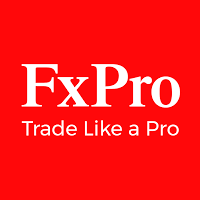For more than 15 years, Exness has remained steadfast in its commitment to offering clients complete transparency in pricing and execution. To truly comprehend the inner workings of our pricing algorithms and spreads, a mere glance at our tick history won't suffice. Hence, we embark on a journey, a series of five installments, that not only unveils how Exness crafts its pricing but also sheds light on the methods employed by major banks and financial institutions.
Our first step is to dissect one of the fundamental yet often misconstrued terms in the industry - the over-the-counter (OTC) market.
Understanding the OTC Market
The OTC market stands as a pivotal player in the financial landscape, with its significance stemming from its flexibility in transaction structures and its broad spectrum of accessible assets. It is known for offering lower trading costs and reduced regulatory requirements compared to traditional exchanges.
Distinguishing OTC from Exchanges
In the OTC market, transactions occur directly between independent, decentralized parties. Two parties agree upon a price for financial instruments without the involvement of a centralized exchange. This decentralized nature attracts a diverse array of market participants, including hedge funds, investment banks, and market makers such as Exness.
To grasp this concept better, consider a scenario outside the financial realm. When you purchase a used car from your neighbor, it represents an OTC transaction. There exists no central marketplace for used cars, and thus, you and the seller determine the transaction price.
OTC Market Dynamics and Pricing
In the OTC market, identical assets are traded across various marketplaces. Consequently, prices can naturally differ among these marketplaces as transactions within each marketplace influence pricing. However, arbitrage ensures that these discrepancies do not persist for long. Spreads also vary based on the liquidity available and the willingness of price providers to transact.
Let's illustrate this with a familiar scenario: currency exchange at different banks. Each bank may offer slightly different exchange rates due to their distinct cost structures, demand and supply dynamics, and risk evaluations. This leads to minor variations in currency prices and spreads at each bank. Some banks may establish a daily rate with a wider spread, while others offer real-time rates with tighter spreads.
To simplify further, let's return to the car example. You purchased the car from your neighbor at a lower price because you knew its typical market value was higher. Later, you decide to sell it for a profit by advertising it on a popular car marketplace. Thanks to arbitrage opportunities across different marketplaces, you can capitalize on these price differences.
Delving Deeper into Arbitrage
Market dynamics continually evolve, necessitating rapid action to exploit price inefficiencies, especially in online trading where algorithms vie for such opportunities. Arbitrage opportunities are pervasive, extending beyond the FX market to include spot metals, energies, indices, and cryptocurrencies.
Different prices for the same asset can emerge simultaneously in various locations or on different trading platforms, creating opportunities for participants to profit by buying where prices are low and selling where they are high. These discrepancies can occur across different marketplaces, trading platforms, or geographical regions.
In Conclusion
Having unraveled the essence of the OTC market, dissected pricing variations, and explored the world of arbitrage, it is time to delve deeper into the mechanics of price generation. The forthcoming articles in this series will unveil the logic governing pricing generation, not only at Exness but throughout the industry. Stay tuned for an enlightening journey into the heart of pricing in the financial world.



















